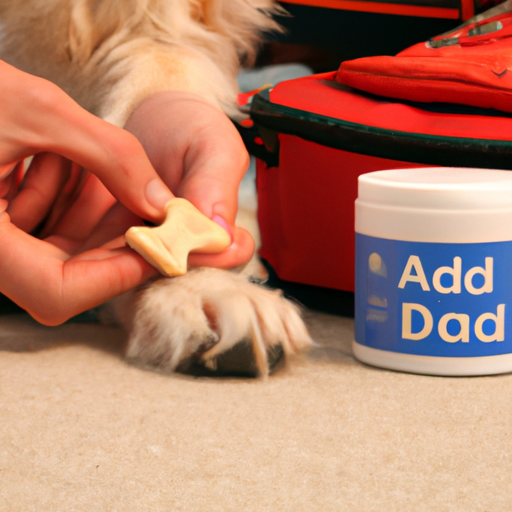As a caregiver, your dog’s health and well-being are of utmost importance, and this includes taking care of their paw pads. These pads are often overlooked, but they can become injured or damaged, causing discomfort and pain to your furry friend. Here’s a comprehensive guide on how to heal your dog’s paw pads.
1. Understanding the Importance of Paw Pads
Paw pads are more than just cute, squishy parts of your dog’s feet. They serve as shock absorbers for the bones and joints in the foot and provide insulation from extreme temperatures. They also aid in traction when your dog walks or runs on various surfaces.
2. Common Paw Pad Injuries
Your dog’s paw pads can get injured due to various reasons, including:
- Walking on hot pavement
- Stepping on sharp objects
- Allergic reactions
- Infections
3. Healing a Damaged Paw Pad
Here are the steps to heal a damaged paw pad:
- Clean the wound: Use a mild antiseptic to clean the wound. Avoid using hydrogen peroxide as it can delay healing.
- Apply a pet-safe antibiotic: Apply a thin layer of a pet-safe antibiotic ointment on the wound.
- Bandage the paw: Wrap the paw with a bandage to prevent your dog from licking the wound.
- Change bandage regularly: Change the bandage every day and check for signs of infection.
- Restrict activity: Limit your dog’s physical activity until the paw pad has healed.
4. Preventing Paw Pad Injuries
Prevention is always better than cure. Here are some tips to prevent paw pad injuries:
- Regularly check your dog’s paw pads for any signs of injury or damage.
- Avoid walking your dog on hot pavement or sharp surfaces.
- Use dog boots or paw wax for extra protection.
5. When to See a Vet
If your dog’s paw pad injury is severe, or if it’s not healing despite your at-home care, it’s time to see a vet. Signs that you need to see a vet include:
- Deep cuts or wounds
- Signs of infection like redness, swelling, or pus
- Your dog is limping or refusing to put weight on the paw
- Your dog’s behavior changes, such as increased aggression or fear
| Signs | Action |
|---|---|
| Deep cuts | See a vet |
| Infection | See a vet |
| Limping | See a vet |
| Behavior changes | See a vet |
FAQ
Q: How long does it take for a dog’s paw pad to heal?
A: Minor injuries might heal in as little as a few days, while more severe injuries could take weeks.
Q: Can I use human antibiotic ointment on my dog?
A: Yes, but make sure it’s a pet-safe product. Avoid ointments that contain pain relievers as they can be toxic to dogs.
Q: How can I make my dog’s paw pads stronger?
A: Regular walks on different surfaces can help toughen up your dog’s paw pads. However, you should still avoid extremely hot or sharp surfaces.
Q: Is limping always a sign of a paw pad injury?
A: Not necessarily. Limping can be a sign of various issues, including joint problems or injuries to other parts of the leg. If your dog is limping, it’s best to see a vet.



